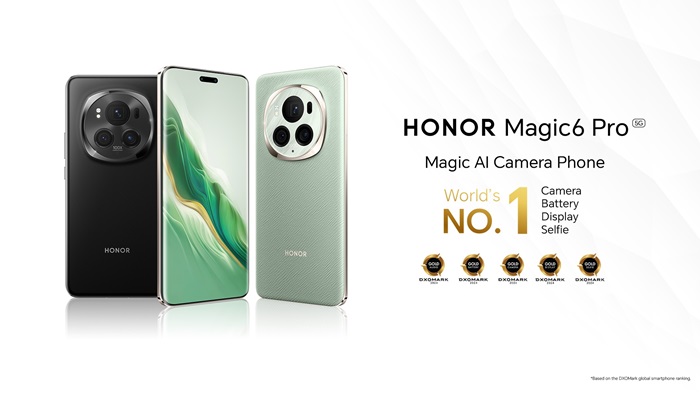Lithium Battery Vs. Other Types: Why Lithium Reigns Supreme In Cycle Life
Batteries are the unsung heroes of our modern world, powering everything from our smartphones to electric vehicles and renewable energy systems. While they come in various shapes and sizes, one critical factor distinguishes them: cycle life. In this article, we will explore the concept of cycle life, delve into the different types of batteries available in the market, and uncover why lithium-ion batteries stand out as the preferred choice due to their exceptional cycle life compared to other battery types.

Understanding Battery Cycle Life
Battery Cycle Life Defined
Cycle life refers to the number of charge-discharge cycles a battery can endure before its capacity significantly degrades. This metric is crucial because it directly impacts the longevity and reliability of battery-powered devices and systems. A longer cycle life means fewer replacements, reduced waste, and overall cost savings.
Measuring and Significance
Measuring cycle life involves testing a battery’s performance under controlled conditions. It is an essential metric for applications where batteries are frequently charged and discharged, such as smartphones, laptops, and electric vehicles. A higher cycle life means a more robust and enduring power source.
Factors Influencing Cycle Life
Several factors influence the cycle life of a battery, including:
- Depth of Discharge (DoD): The extent to which a battery is discharged during each cycle affects its lifespan. Batteries that are frequently discharged to a lower state of charge tend to have a shorter cycle life.
- Temperature: Extreme temperatures, both hot and cold, can significantly impact a battery’s cycle life. High temperatures accelerate degradation, while low temperatures reduce a battery’s capacity temporarily.
- Charging and Discharging Rates: Rapid charging or discharging generates more heat, potentially shortening the battery’s lifespan. Slower charge and discharge rates are generally gentler on batteries.
- Quality of Manufacturing: The design and manufacturing quality play a crucial role in determining cycle life. Inferior materials or suboptimal construction can lead to premature failure.
Types of Batteries
Diverse Battery Chemistries
Batteries come in various chemistries, each with its own set of characteristics. Some of the most common types include:
- Lead-Acid Batteries: Often used in automotive applications, these batteries are known for their durability but have limited cycle life.
- Nickel-Cadmium (NiCd) Batteries: Once popular in portable electronics, NiCd batteries have a moderate cycle life but suffer from toxic cadmium content.
- Nickel-Metal Hydride (NiMH) Batteries: NiMH batteries offer a decent cycle life and improved energy density compared to NiCd batteries. They are commonly used in consumer electronics.
- Lithium-ion (Li-ion) Batteries: Lithium-ion batteries have emerged as the frontrunner in various applications due to their exceptional cycle life, high energy density, and lightweight design.
Advantages and Disadvantages
Each battery type has its own set of advantages and disadvantages:
Lead-Acid Batteries:
Advantages:
- Cost-effective.
- Well-established technology.
Disadvantages:
- Heavy and bulky.
- Limited cycle life.
- Maintenance-intensive.
Nickel-Cadmium (NiCd) Batteries:
Advantages:
- Robust and durable.
- High discharge rates.
Disadvantages:
- Toxic cadmium content.
- Moderate cycle life.
- Vulnerable to “memory effect.”
Nickel-Metal Hydride (NiMH) Batteries:
Advantages:
- Improved energy density over NiCd.
- Reduced environmental impact.
Disadvantages:
- Moderate cycle life.
- Self-discharge rate.
Lithium-ion (Li-ion) Batteries:
Advantages:
- Exceptional cycle life.
- High energy density.
- Lightweight.
- Fast charging.
Disadvantages:
- Safety concerns.
- Resource limitations (cobalt, lithium).
Lithium-ion Batteries: The Cycle Life Champion
Lithium-ion Battery Basics
Lithium-ion batteries are renowned for their impressive cycle life. They operate on a lithium-based chemistry and consist of positive and negative electrodes separated by an electrolyte. Variants of lithium-ion batteries include lithium iron phosphate (LiFePO4), lithium nickel cobalt manganese oxide (NCM), and lithium nickel cobalt aluminum oxide (NCA), each offering specific advantages and disadvantages. If you’re in need of a reliable 12V 20Ah battery, consider checking out the Goldenmate 12V 20Ah for exceptional performance.
Advantages of Lithium-ion Batteries
- High Energy Density: Lithium-ion batteries pack a significant amount of energy into a relatively small and lightweight package, making them ideal for portable electronic devices.
- Lighter Weight: Compared to many other battery types, lithium-ion batteries are notably lighter, making them suitable for applications where weight is a concern, such as electric vehicles.
- Faster Charging: Lithium-ion batteries can be charged more quickly than some other types, offering convenience for users.
Focus on Cycle Life Superiority
What truly sets lithium-ion batteries apart is their remarkable cycle life. These batteries can undergo hundreds to thousands of charge-discharge cycles without significant capacity loss, making them exceptionally durable. Real-world examples and case studies demonstrate their ability to outperform other battery types in this regard.
Comparison with Other Battery Types
When comparing specific cycle life data, lithium-ion batteries consistently outshine their counterparts. For example, a typical lithium-ion battery can endure over 500 charge-discharge cycles with minimal capacity loss, while lead-acid batteries may only manage 300 cycles, and NiCd or NiMH batteries around 500 cycles. This exceptional cycle life positions lithium-ion batteries as the preferred choice for applications where longevity is paramount.
Factors Influencing Cycle Life
Lithium-ion batteries are not exempt from the factors influencing cycle life, but they are particularly well-suited to mitigate these challenges.
- Depth of Discharge (DoD): While deeper discharges can affect cycle life, lithium-ion batteries tend to tolerate them better compared to other chemistries. Advanced battery management systems (BMS) ensure that lithium-ion batteries are operated within safe DoD limits.
- Temperature: High temperatures can degrade lithium-ion batteries over time, but sophisticated thermal management systems and materials have been developed to mitigate this issue, allowing them to perform well in various climates.
- Charging and Discharging Rates: Lithium-ion batteries can handle fast charging and discharging rates effectively, thanks to advancements in electrode materials and BMS technology. This makes them suitable for applications where rapid energy transfer is essential.
- Quality of Manufacturing: High-quality manufacturing processes and strict quality control measures have become standard in the production of lithium-ion batteries, ensuring consistency and longevity.
Applications and Industries Benefiting from Lithium-ion Batteries

Lithium-ion batteries have found applications across various industries, thanks to their impressive cycle life:
- Consumer Electronics: Smartphones, laptops, and tablets benefit from the long-lasting power provided by lithium-ion batteries, reducing the need for frequent charging and replacements.
- Electric Vehicles: The automotive industry has seen a significant shift towards electric vehicles (EVs) due to lithium-ion batteries’ ability to offer extended driving ranges over their lifespan.
- Renewable Energy: Lithium-ion batteries are integral to energy storage systems in renewable energy installations, enabling a more reliable and sustainable power supply.
- Medical Devices: Lifesaving medical equipment relies on lithium-ion batteries for dependable and long-lasting performance.
- Industrial Equipment: Forklifts, warehouse machinery, and other industrial applications benefit from the durability and longevity of lithium-ion batteries, reducing downtime and maintenance costs.
Challenges and Future Developments
Lithium-ion batteries are not without their challenges, and continuous research and development are essential to address these issues and maintain their dominance.
- Safety Concerns: Lithium-ion batteries can pose safety risks if they are damaged or abused. Efforts are ongoing to improve safety features and develop solid-state lithium-ion batteries that are less prone to thermal runaway.
- Resource Limitations: The demand for lithium-ion batteries has raised concerns about the availability of essential materials like cobalt and lithium. Recycling and sustainable sourcing are areas of active research and development.
- Solid-State Batteries: Solid-state lithium-ion batteries hold promise as the next-generation power source, offering enhanced safety, longer cycle life, and potentially higher energy density.
- Recycling and Sustainability: Developing efficient recycling processes for lithium-ion batteries is crucial to reduce environmental impact and recover valuable materials for future battery production.
Conclusion
In the ever-evolving world of battery technology, cycle life stands as a critical factor influencing the choice of power source for a wide range of applications. While various battery types exist, lithium-ion batteries reign supreme in cycle life, offering exceptional longevity, high energy density, lightweight design, and fast charging capabilities. Despite facing challenges such as safety concerns and resource limitations, ongoing research and development efforts ensure that lithium-ion batteries will continue to dominate the battery landscape, powering our modern world for years to come. As we strive for a more sustainable and efficient future, lithium-ion batteries will undoubtedly play a central role in shaping our energy landscape.

















